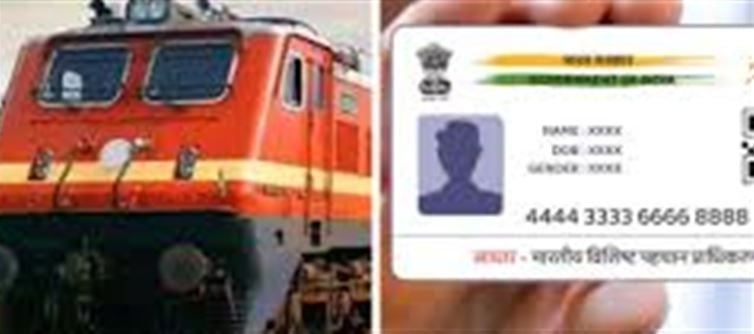
Indian Railways is set to enhance passenger security with new rules for ticket bookings. From October 1, 2025, e-Aadhaar verification will become mandatory for general reservations, bringing them in line with the Tatkal booking system. Here’s what you need to know.
1. What’s Changing?
- Currently, Aadhaar verification is required only for Tatkal tickets.
- From October 1, 2025, it will be mandatory for all general reservation tickets booked online.
- This step aims to prevent fraud and ensure passenger identity.
2. How e-Aadhaar Verification Works
- Passengers must link their Aadhaar number with their irctc account.
- During booking, an OTP will be sent to the registered mobile number linked to Aadhaar.
- Only after successful verification will the ticket be issued, ensuring secure reservations.
3. Impact on Passengers
- Those whose Aadhaar is not linked may face delays or restrictions while booking tickets.
- Passengers should link Aadhaar in advance to avoid inconvenience.
- This applies to all categories of trains, including express, mail, and superfast trains.
4. Steps to Link Aadhaar with IRCTC
Log in to your IRCTC account.
Navigate to “My Profile” > “Aadhaar Linking”.
Enter your 12-digit Aadhaar number.
Verify via OTP sent to your registered mobile.
Once linked, you can book tickets without any restrictions.
5. Benefits of Aadhaar Verification
- Enhanced Security: Reduces identity-related fraud in train bookings.
- Seamless Booking: Linked accounts experience faster verification and confirmation.
- Transparency: Passenger details are correctly recorded, ensuring accurate travel records.
- Uniformity: General reservations now have the same security measures as Tatkal bookings.
Takeaway: From October 1, 2025, e-Aadhaar verification will be mandatory for all irctc general reservations, making travel safer and more transparent. Passengers should link their Aadhaar in advance to ensure smooth booking and avoid last-minute hassles.
Disclaimer:
The views and opinions expressed in this article are those of the author and do not necessarily reflect the official policy or position of any agency, organization, employer, or company. All information provided is for general informational purposes only. While every effort has been made to ensure accuracy, we make no representations or warranties of any kind, express or implied, about the completeness, reliability, or suitability of the information contained herein. Readers are advised to verify facts and seek professional advice where necessary. Any reliance placed on such information is strictly at the reader’s own risk..jpg)




 click and follow Indiaherald WhatsApp channel
click and follow Indiaherald WhatsApp channel